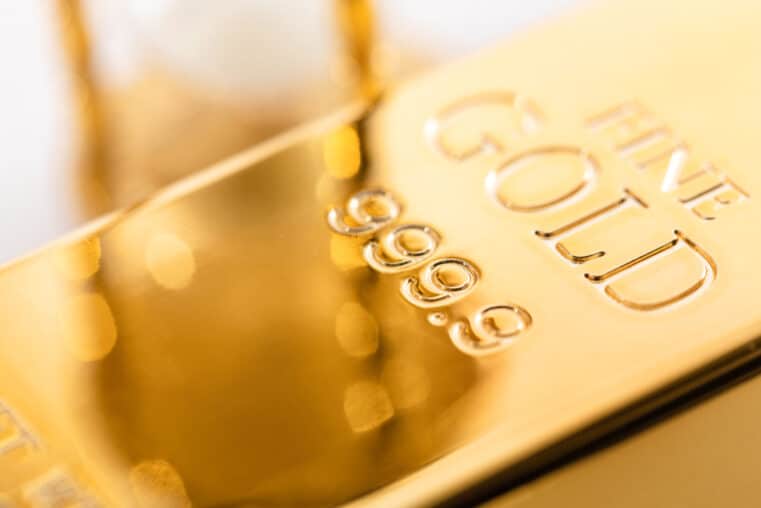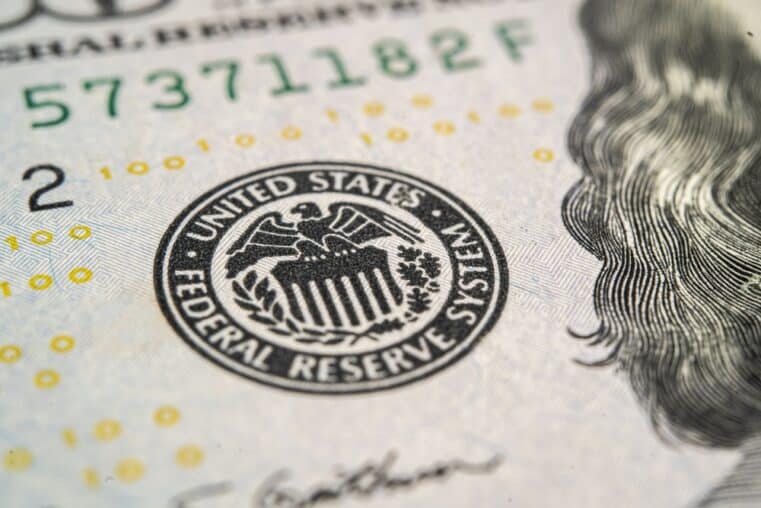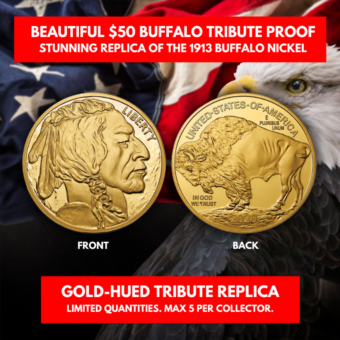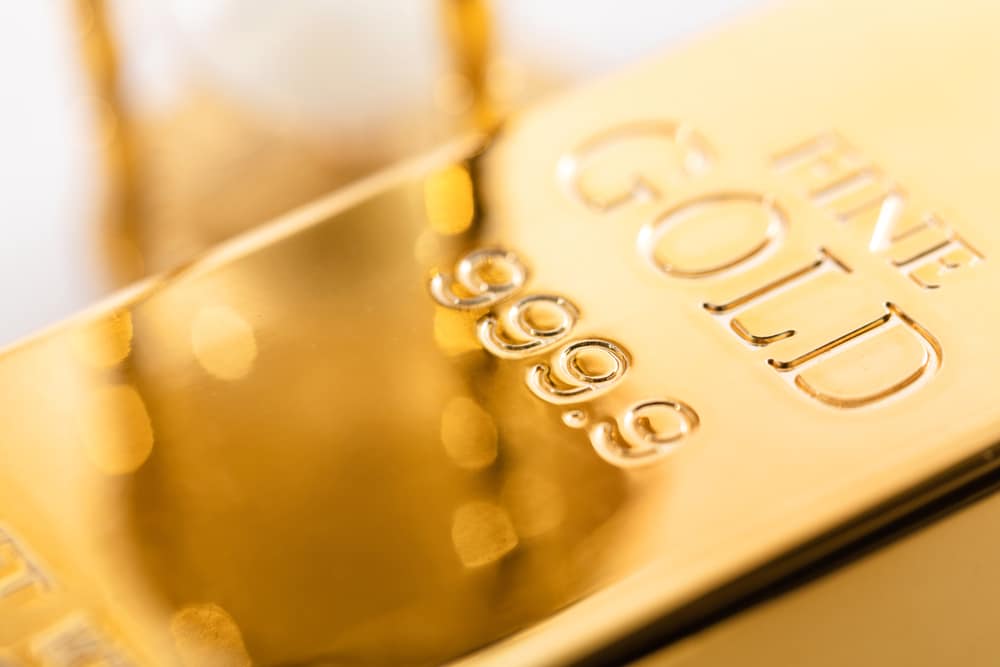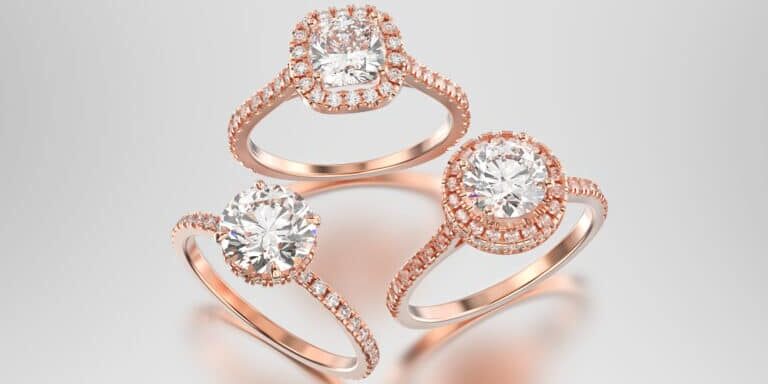
What is Rose Gold? History & Composition of Rose Gold
Gold continues to be one of the most popular precious metals on the planet. From the earliest days of its discovery, the malleable metal has captured people’s imaginations and spurred their desire. It quickly became a substance of gods, kings, and queens, and, with that status, came a long history of experimentation and manipulation.
Alchemists tried to generate gold from base substances, artists looked to the metal for inspiration, and jewelers manipulated it to fit their vision. The traditional yellow gold that comes to mind when you think of the precious metal was slowly adapted over time. While the traditional golden hue is what you’ll find in most cases, other colors of gold have slowly come into existence. Among these, one of the most popular is rose gold.
What is Rose Gold?
Pure unadulterated 24 karat gold is both beautiful and soft. It is so soft and malleable, in fact, that it can’t be used in normal jewelry. Instead, pure gold must be blended, or alloyed, with another metal to give it the necessary strength to maintain its form and functionality. Common metals of choice include zinc, nickel, iron, silver, and aluminum among others. Each of these metals is white or grey in color and, depending on how much is used in the alloy, can change the color of gold.
Most traditionally colored gold pieces are made as an alloy with a small amount of a white or grey metal so as to not impact the final color of the piece. Rose gold is different. This uniquely colored alloy is made by blending gold, which is naturally yellow, with copper and silver. Copper is distinct because it and gold are the only two colored pure metals. Copper naturally has a reddish-brown color to it so when it is mixed with the yellow of gold you begin to see reddish hues.
Similar to mixing paints, as you mix different proportions of colored metals you will get different results. For example, depending on the copper content in something, you can get red, rose, and even pink gold. Gold offers a light yellow base, copper introduces a powerful red hue, and metals like silver serve as a white to lighten the final color.
If you were to mix 75% gold with 25% copper you would get a distinct 18K red gold. If you add 2.75% silver to the mix, drop the copper content to 22.25%, and keep the gold amount at 75% you would get an 18K rose gold. Bringing the silver content up to 5%, dropping the copper to 20%, and leaving gold at 75% would then produce an 18K pink gold. You’ll notice that each mixture produces a distinct color while also reducing the karat count for the gold. As you use less gold your karat count will drop. A 12K red gold, for example, would use 50% gold and 50%, copper.

Rose gold is more durable than white or yellow gold.
The History of Rose Gold
If you were to take the time and read old Greek, Roman, and even medieval texts referencing gold you would notice something odd. The gold is continually described as being red. This is because impurities in early smelting processes would often turn gold a reddish color. Purely by accident, and because better techniques had not yet been invented, these early goldsmiths were on the cusp of making rose gold.
During roughly the same time period, in another part of the globe, South American tribes were also producing gold with a reddish hue. Archaeologists in Colombia have found gold artifacts with the coloration and some believe early skilled metalworkers created the effect on purpose. Artifacts from the Nahuange period (AD 100-1000) found in scattered villages in the Sierra Nevada de Santa Marta mountain range look to be purposefully burnished to expose certain colors. Still, from a technical perspective, these early creations don’t qualify as rose gold.
In the grand history of gold, true rose gold is relatively new to the scene. It wasn’t until the early 19th century in Russia that rose gold officially came into existence. The now-famous jeweler, Carl Fabergé, was named ‘goldsmith by special appointment to the Imperial Crown’ and was commissioned to make a special Easter egg for the empress as a gift. From this commissioned work arose a series of now highly coveted and valuable bejeweled eggs known as Fabergé Eggs.
A grand total of 50 were ultimately made and each one is spectacularly unique and beautiful. It was in the pursuit of originality and beauty in these eggs that Carl Fabergé first produced rose gold. Each egg is a work of goldsmithing art and the initial use of rose gold made a distinct impression. For many years rose gold was actually called “Russian gold” because of these origins.
It wasn’t until decades later though, in the lavish 1920s of the United States, that rose gold really took a foothold in the world of art deco fine jewelry. In particular, the famed French writer, artist, filmmaker, and playwright Jean Cocteau commissioned Cartier to create a ring with three colors of gold intertwined. This now-famous “Trinity Ring” utilized rose gold and became a much-emulated fashion piece of the decade.
As the decades changed and the tumultuous and poverty-stricken years of the 1930s set in rose gold briefly fell out of popularity. The jarring economic shift led to a cultural shift that brought with it a change in fashion and jewelry design. Monochromatic tones were preferred along with geometric designs. Platinum was a favorite metal of choice due to its pure white color. But, as before, the decade shifted and the movements of history changed collective preferences.
As World War II unfolded in the 1940s platinum was designated as a strategic resource necessary for the war effort. The jewelry preferences of the 30s were no longer permissible. Slowly, rose gold made a comeback as varying hues of gold were introduced again. This on again off again nature of the collective desire for rose gold has come to be expected now. The distinctive and beautiful hue experiences an ebb and flow in demand. Yet, now, after all these years, rose gold is likely here to stay.
High Karat Crown Gold
Just as the early Greeks and Romans came close to producing rose gold, albeit accidentally, the English produced something in the 16th century that resembled rose gold. In 1526 Henry III decided to introduce a new currency to the empire and commissioned a coin, called a crown coin, to be made. The coin was made using a 22 karat gold alloy metal which was traditionally alloyed with copper. At 22 karats the gold content of the coin would be around 91% yet the small amount of copper that was included was enough to offer a slight red/pink hue to the gold.
With that coloration and high gold content, some people would later describe these coins as being the highest karat rose gold you could find. However, because the coins didn’t contain silver when copper was alloyed with the gold they aren’t true rose gold productions. Still, this coin metal mixture was popular enough to be emulated in later years. For example, up until 1834 in the United States, many circulating gold coins were made as 22 karat alloys with copper.
In fact, a 90% gold-copper alloy coin remained in U.S. circulation up until 1933 when gold coinage was permanently removed. More recently, in 1967, South African gold coinage began being produced using the original crown coin recipe. To this day you can still find collectible gold coins made in this fashion but this isn’t usually the case. Because gold coins aren’t used as currency these days they don’t need to be alloyed for wide use and circulation. Most gold coins that you buy today will be 24 karats at varying degrees of fineness.
Modern Considerations for Rose Gold
Rose gold has staying power because of its unique beauty and color. In the 21st century, it stands out as a popular and stylish choice for men and women alike. Many people choose to style rose gold by accompanying it with other pieces of white and yellow gold, however, it is just as stylish to wear rose gold on its own. Many couples turn to rose gold for their engagement rings actually because the pink hue is considered romantic and symbolic of love. The hue also manages to complement all skin tones so, in a nutshell, anyone can look good wearing rose gold.
The hidden upside in rose gold is that it is often more affordable than other colors of gold. This is because the copper used to alloy with gold and create the rose hue is relatively cheap when compared to other common alloying metals. An 18K rose gold ring can sometimes be significantly cheaper than an 18K yellow or white gold piece. The same copper that reduces the cost of the piece can also make it very durable so, compared to other gold jewelry pieces, rose gold is among the toughest.
However, with rose gold, it isn’t all sunshine and roses. There are some downsides that you don’t experience with other colors of gold. Rose gold aficionados will be disappointed to find that the unique alloy is less common than white or yellow gold. Most jewelry stores will carry far more pieces in other colors of gold so, if you have something particular in mind, you might need to have it made custom. The other issue with rose gold is that it can cause allergic reactions in some due to the copper. This means it is not a hypoallergenic metal.
The copper content of rose gold is both a benefit and a potential problem for some. It is the metal that lends rose gold its increased durability and lower price but it is also the metal that makes pieces allergic for certain people. One more plus for rose gold though is that it won’t tarnish. While other alloys of gold have the potential to tarnish depending on what they are alloyed with, the predominantly gold and copper composition of rose gold protects it from that problem. As long as the piece is cleaned and polished it will continue to shine beautifully.
The Many Possible Colors of Gold
The most common colors of gold that you will see are the traditional colored gold, the pink hues of rose gold, and the clean-looking white gold. Actually, when it comes to styling rose gold many people like to wear all three colors together, somewhat like the famous trinity ring of Jean Cocteau mentioned earlier. What many people don’t realize though is that gold is capable of a wider range of colors. From green and purple to black and blue, gold is colorful.
Yellow, Rose, and White Gold
The many possible colors of gold all begin with some amount of pure gold which is often described as being a red-yellow color. Variations of that color begin to appear as pure gold is alloyed with other metals. To make a more yellow gold it is actually necessary to alloy 75% gold with around 12.5% copper and 12.5% silver. Dropping the silver concentration in favor of more copper is what produces rose color gold and pink color gold while pure alloys of gold and copper create red gold.
When you remove the copper entirely and simply alloy gold with silver, nickel or palladium you get white gold. The gold itself can actually range from pale yellows to a pale rose though so the term “white gold” is often used more as a designation and less to describe appearance. Sometimes more complex alloys of gold are employed to make white gold such as nickel, copper, and zinc mixed with gold.

Rose gold was originally called “Russian Gold”.
Green, Grey, and Black Gold
Outside of the aforementioned alloys producing yellow, rose, and white gold, jewelers have created some distinct hues. For example, green gold exists both in nature and as a man-made alloy. Naturally, green gold occurs when silver alloys with gold to create more of a greenish-yellow color. When gold is alloyed with cadmium, however, it can produce distinctly green gold. Grey gold is also possible when gold is mixed with palladium or a combination of silver, manganese, and copper.
One of the more surprising colors of gold is black. This dark chemical manifestation of gold is used practically in jewelry but it is a marvel of chemistry that it can be made. One of the simplest methods for making black gold simply involves alloying gold with cobalt and heat-treating the result. This method creates a thin dark layer over the gold that gives it a dark appearance. Other methods make use of more complex chemistry to oxidize, patinate, or leave a vapor deposition on the gold. The end result in each case is an otherworldly black gold.
Purple and Blue Gold
Purple and blue gold are two of the stranger colors of gold and they don’t occur without the right amount of chemistry magic. These gold colors make use of something called intermetallics which has a unique atomic structure that lends its distinct properties and colors. For the most part, intermetallics are brittle and can only be used in jewelry when designed the right way as a gemstone. Without the special, and brittle, intermetallic structure these gold alloys wouldn’t have their color.
Purple gold, for example, is an intermetallic alloy of gold and aluminum. Normally, when gold is alloyed with aluminum it doesn’t change color much. The intermetallic, however, takes this otherwise normal gold alloy and transforms it into a beautiful purple hue. Similarly, blue gold is made with an intermetallic alloy of gold and either gallium or indium. The final color of this mixture isn’t as blue as you might imagine but the color difference is definitely detectable when done right. Interestingly, blue gold can also be obtained with a heat-treated alloy of gold, nickel, and iron or by alloying with an array of rarer elements and heat-treating the result. These heat-treated alloys give a deeper blue than the intermetallic.
Final Verdict:
From the earliest days of gold and metalsmithing, people have been combining gold with other metals. Many times throughout history rose gold was nearly created but it wasn’t until Carl Fabergé made the unique choice to add a touch of silver to a gold and copper alloy that true rose gold was born. From that point forward rose gold rode the waves of history and is now here to stay. Although rose gold is just one of the many possible colors of gold it stands out as part of a trifecta of stylish golds. It is no longer enough to own a white or yellow piece of gold, modern style dictates the set be completed with nothing less than rose gold itself.



